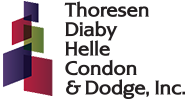
When you hear the word “audit,” you might automatically associate it with financial reporting or the IRS. But auditing warehouse operations might also be beneficial for some businesses, such as manufacturers, distributors and retailers. Awkward or repetitive movements by employees, oversized packages and disorganized layouts can slow down productivity and even lead to medical and disability claims. Small adjustments can make a big difference in your bottom line. Here are some steps toward more efficient warehouse management.
Compute average cycle time
Looking around the warehouse, you probably see a lot of people and products in motion. But don’t equate constant motion with efficiency. A closer inspection may reveal people and products waiting in queues due to blocked aisles, unavailable forklifts or computer glitches. You may even find some workers wandering aimlessly for misplaced or hard-to-find items.
Improving efficiency starts by reviewing the order fulfillment process. How long does it take to process an order from start to finish? Your average cycle time is a critical benchmark. The goal is to find ways to reduce it by minimizing errors, wasted movements, congestion and inefficient picking paths. Bottlenecks, idle workers, unused space and piles of unattended inventory represent opportunities for improvement.
Make tangible enhancements
Once you’ve identified potential inefficiencies, you can put formal policies and procedures in place to reduce or eliminate them. Efficient warehouses have specific protocols for putting away shipments of new items, restocking returns, cleaning up messes, responding to accidents, and storing warehouse supplies and equipment.
Once those types of standard operating procedures are communicated to employees, focus on streamlining fulfillment. Examples of workflow improvements include:
- Rethinking floor, aisle and rack layout to improve space utilization,
- Rearranging product locations so the most popular items are located in ground-level bins that are nearest to the packing stations, and
- Redesigning signage to make it easier for pickers to identify aisles, racks, products, and workflow.
Consider asking your workers for suggestions. They may have some ideas that you haven’t thought of yet — plus, it helps with buy-in on any changes to your existing operating procedures.
After you’ve implemented improvements, measure your new and improved cycle time. Knowing how much you’ve shaved off the baseline metric can be a powerful motivational tool. Use it to drive continuous improvement.
Consider investing in more technology
Manual processes and outdated systems can cause errors and delays in fulfillment. So why not automate certain functions using technology? Bring your existing inventory management systems into the 21st century with upgrades, such as wireless mobile devices, radio frequency identification (RFID) technology, automated material handling equipment and voice-picking applications. Doing so can potentially speed up fulfillment, reduce errors and enhance customer satisfaction levels.
Before investing in a technology upgrade, it’s important to carefully weigh the costs vs. benefits. You’ll also need to evaluate compatibility issues with your existing accounting and resource planning systems. And don’t forget to train employees on how to use the technology; otherwise, you won’t reap all its potential benefits.
We can help
Sometimes objective outsiders can spot warehouse inefficiencies that company insiders overlook on a daily basis. Or they may be aware of improvements that other companies have successfully implemented. Contact us for guidance on best practices before auditing your warehouse.
© 2024
